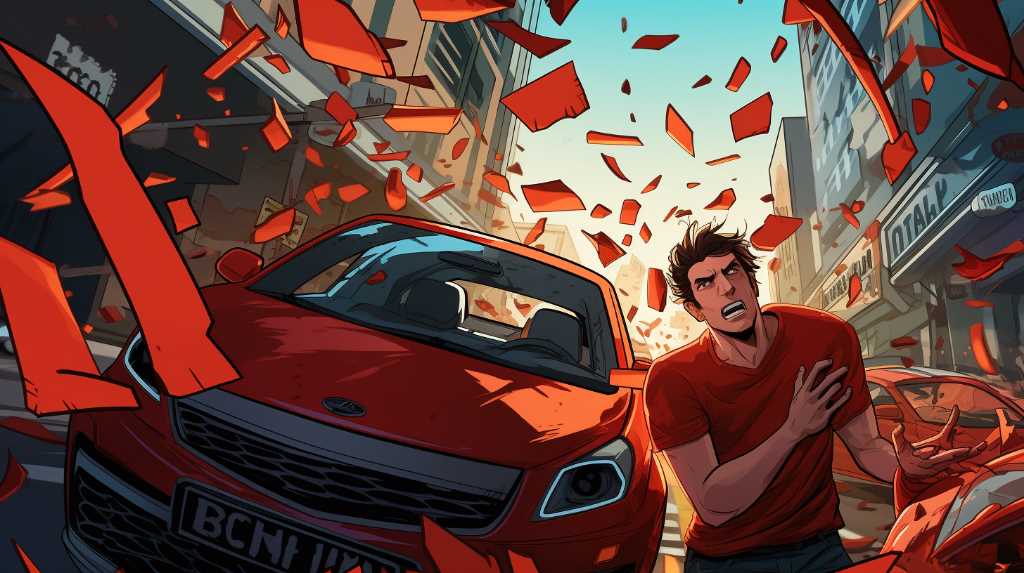
Driver mistakes often cause car crashes. These mistakes include not paying attention, such as texting while driving, which makes accidents more likely.
Driving while drunk or on drugs makes it hard for drivers to react quickly and make good choices. Speeding and changing lanes unsafely are also risky behaviors.
Ignoring red lights and stop signs is another bad decision. Not driving carefully in bad weather or heavy traffic can also lead to crashes.
Knowing these bad habits helps us drive safer and avoid crashes that we could prevent.
Distracted Driving Dangers
Distracted driving is a common cause of car accidents because it takes the driver’s focus away from the road. It includes things like texting, eating, or using the car’s entertainment system while driving. Studies of car crashes often point to these distractions as major factors.
Road safety reports show that when there are more distracted drivers, there are more accidents. So, it’s really important to enforce the rules against distracted driving and to teach people about its dangers. We need to make sure everyone understands how serious this problem is and that we need to work together to make our roads safer.
Impaired Operation Risks
Building on the issue of distracted driving, impaired operation—such as driving under the influence of alcohol or drugs—presents another serious form of driver negligence that significantly elevates the risk of car accidents.
Statistically, impairment by substances is a leading factor in vehicular incidents, with the National Highway Traffic Safety Administration reporting that every day, approximately 28 people in the United States die in drunk-driving crashes. This translates to one person every 52 minutes.
The analysis of collision data reveals that alcohol-related accidents are more likely to result in fatalities or severe injuries, underscoring the heightened danger associated with driving under the influence.
Methodical enforcement of DUI laws and public awareness campaigns are crucial in mitigating this risk, as they have been shown to correlate with a decrease in such accidents.
Aggressive Driving Behaviors
Driving in a way that’s too aggressive, like speeding, following too closely, or changing lanes suddenly, can cause more car crashes. The National Highway Traffic Safety Administration (NHTSA) shows that these bad driving habits are often involved in many accidents on the road.
When someone drives too fast, they have less time to react, and if there’s a crash, it can be much worse. If a driver is tailgating, which means they’re not leaving enough space between their car and the one in front, they might not be able to stop quickly enough and could hit the car in front of them.
Also, when drivers change lanes a lot without warning or looking properly, it can scare other drivers and lead to accidents. Studies of car accidents show that when people drive aggressively, there are more crashes.
This tells us we need to teach drivers to be more careful and maybe even make some new rules to stop this from happening.
Ignoring Traffic Controls
When looking into aggressive driving, we often see that a lot of drivers ignore traffic lights and stop signs. This is very dangerous and makes car crashes more likely to happen at intersections.
When we look closely at reports of car accidents, we find that many crashes in cities happen because drivers don’t follow traffic rules. This kind of carelessness is against the law and it messes up the systems we have to keep traffic moving safely and to protect everyone on the road. In fact, breaking these rules is one of the main reasons for accidents at intersections.
It’s really important for drivers to obey traffic signals and signs to keep our roads safe.
Failing to Adapt to Conditions
Some drivers don’t slow down or change how they drive when the weather is bad or the road is hard to see, and this causes a lot of car crashes. When we look at reports from car crashes, we see that many happen because drivers don’t change how they drive when they need to.
They might think they are better drivers than they actually are, or they might not realize how dangerous the road is, which can lead to driving too fast or making unsafe moves. Studies show that when drivers don’t adapt to different driving conditions, there are more crashes.
This tells us that it’s really important to teach drivers how to drive safely in all kinds of weather and to have rules that make sure drivers change how they drive to match the conditions.
Conclusion
To put it simply, when drivers don’t pay attention, drive under the influence, act aggressively, or ignore road signs, they’re more likely to cause car crashes.
Crashes can happen more often if drivers don’t adapt to things like bad weather. Studies show that these careless behaviors are linked to more car accidents.
To make roads safer and cut down on car crashes caused by carelessness, we need to do a few things: enforce the laws more strictly, teach people about safe driving, and use new technology to help drivers.
For example, using apps that block texts while driving can help prevent distracted driving.